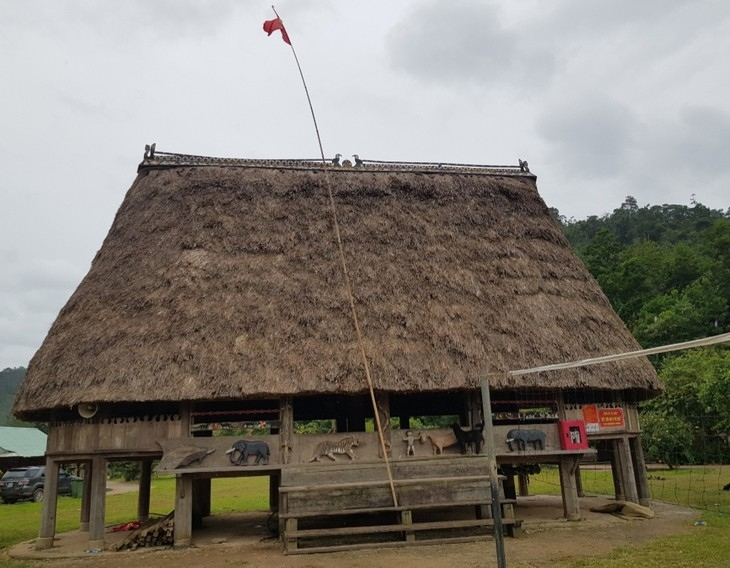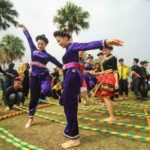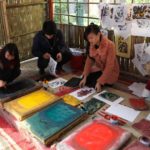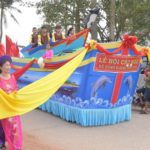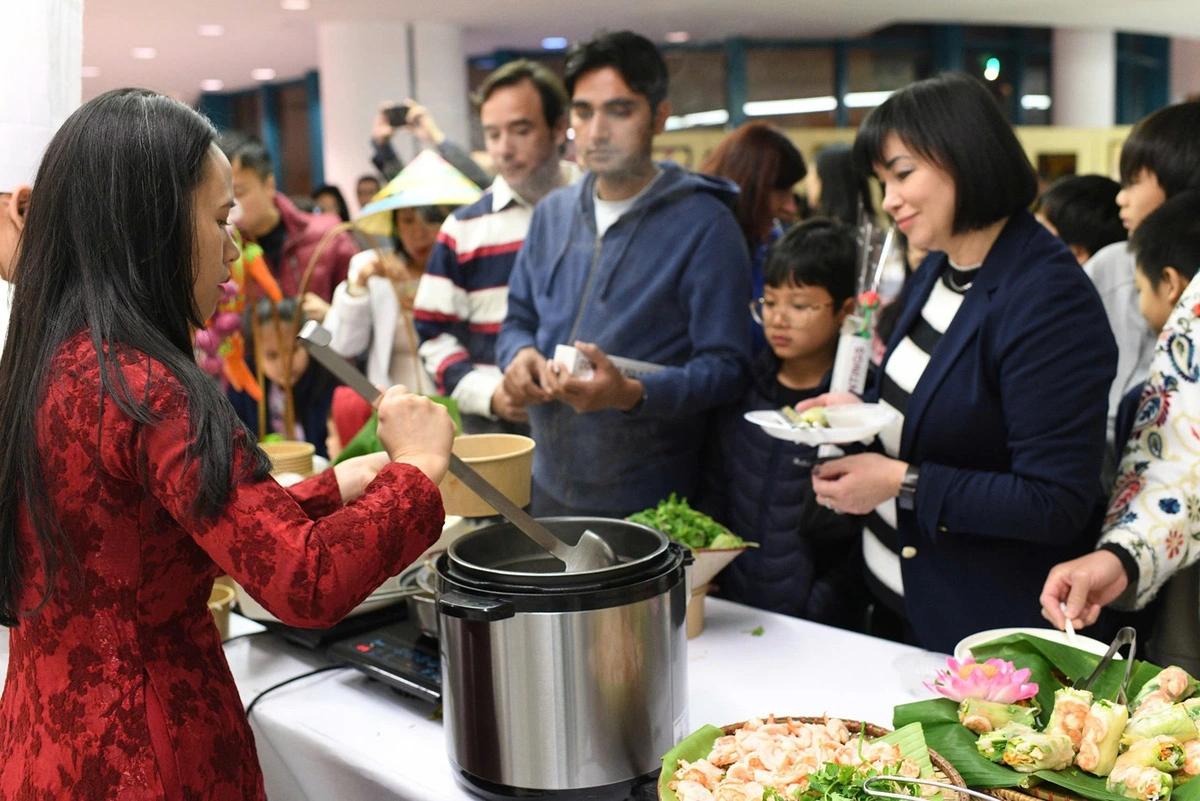In the Co Tu language, Guol means community. Whenever they settle in a new place, the Co Tu people start by selecting a location to build the Guol house, which serves as a symbol of the village’s power and prosperity.
“Each hamlet has its own Guol house. The size and engravings on the house reflect the hamlet’s power. The house’s entrance faces all directions as far as the eyes can see,” says Briu Po, the patriarch of Por’ning hamlet in Quang Nam.
In a Guol house, the more sculptures of objects and animals, the better, adds Briu Po.
“We carve whatever we want, but the following animals are a must. Firstly, the head of a buffalo, as it is the most sacred four-legged animal in Co Tu culture. On the roof of the Guol house, there must be two roosters representing two-legged animals. The python serves as the representative for legless animals. The Co Tu believe that the python is a remarkably strong and docile creature, and it holds educational significance for the villagers. Several masks are also included to ward off evil spirits. The uglier the masks, the more terrifying the devils become.”

With the development of community tourism, the Guol house is now a tourist destination where visitors can stay to learn more about Co Tu culture and way of life, such as brocade weaving and other handicrafts. They can also try their hand at making musical instruments, playing the gongs, and dancing the “Tung tung Da dá” folk dance.
Moreover, Guol serves as a community center for hosting traditional festivals, new rice rituals, and the twinning swearing-in ceremony.
Bhling Phát, the head of Pơr’ning hamlet, recalls, “The villagers gather at the Guol house to attend festivals or discuss community matters. When viewed from above, the Guol house resembles a tortoise shell. Its roof is made of rattan leaves, palm leaves, and nipa leaves, while the house itself is predominantly constructed from wood. The animal sculptures serve the purpose of imparting knowledge about wildlife and the need for nature preservation to future generations.”

The Co Tu believe that Goul is a sacred place, the dwelling of gods and ancestors. When entering Goul, people are expected to refrain from fighting or quarreling. Unity, love, and mutual assistance are highly valued.
“Upon arriving at the Co Tu village, the first thing that catches your eye is Guol. Guol serves as a venue for solidarity and community events. All major and minor festivals take place at Guol,” says Poloong Plenh, a resident of Tay Giang district.
The dominant colors of the paintings adorning the walls of the Guol house are black and white, showcasing depictions of the sun, the moon, and people playing gongs. Musical instruments and farming tools are also displayed on the walls. Guol is considered a cultural museum of the Co Tu.
One distinctive feature of Guol’s architecture is that it only has one main pillar, as explained by patriarch Briu Po.
“Community houses of other groups often have multiple pillars. However, the Guol house has just one central pillar. It symbolizes the united strength of the villagers. The Co Tu people believe that as long as all families and villagers are united, the village will remain intact and indestructible. The village chief consistently reminds the villagers to stay united.”
Vietnam announces eight more national intangible cultural heritages
NDO – The Ministry of Culture, Sports and Tourism has issued Decision No. 4069/QĐ-BVHTTDL, dated October 30, 2018, on announcing an additional eight national intangible cultural heritages.

